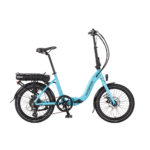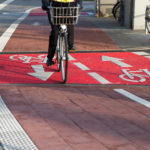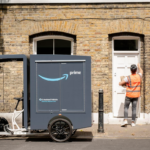Hill climbing and Motor rpm
I've read with interest the postings regarding hill climbing and rpm and was interested in the comment about the 175rpm tonxgin being "detuned."
I think everyone is missing something here which is that the effect of gearing on hub motor efficiency. A 175rpm motor is not detuned, its just less efficient that a 260rpm one because it requires more gearing to change the high rpm of the internal motor down to the required rpm. The greater the change in rpm required the less efficient the gearing will be.
Thus the 260rpm motor is the most efficient because its rpm is closest to that of the motor inside the hub.
I have received printouts of performance figures for the 260rpm motor which shows peak input power of 620 watts producing 20.01 Nm of torque at 193 rpm peak output power of 404.3 watts.
In contrast the printout for the 210rpm motor shows peak input power of 541.7 watts producing 20.05 Nm of torque at 166rpm for a peak output power of 348.4 watts.
The tonxgin website has a graph for what I think is the 190rpm motor which shows peak input power of 400 watts producing 20 Nm of torque at around 167rpm for a peak output power of about 320 watts.
Thus the higher rpm motors are significantly more powerful than the lower rpm ones.
The only reason to go with a lower rpm motor is legality (25km/hr assisted limit).
To go with a lower rpm motor for the purposes of hill climbing is not sensible because your efficiency losses cancel out much of your gains.
This is true for tonxgin but will also be true for all hub motors which use gearing to reduce the rpm of the motor.
In any case I can testify that the 260rpm motor on a Brompton has excellent low end torque and is a great hill climber. I live at the top of a mountain range in a city that is very hilly (Jerusalem) and I haven't met a hill that my Brompton E-Freedom couldn't deal with. This includes hills too steep for cars where the pedestrian path that I ride on goes straight up the hill but the road has to wind around.
The upshot of all this is that smaller wheels are better for geared hub motors and the best option for all purposes, including hill climbing is a Brompton (16" wheels) with a Freedom Ebikes 260rpm kit.
Freedom E-Bikes - Home








